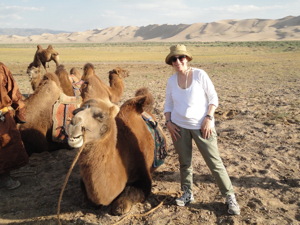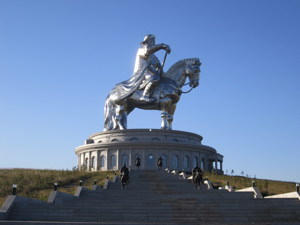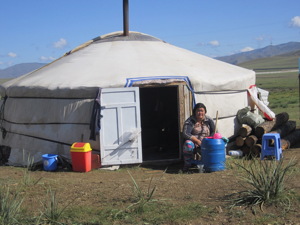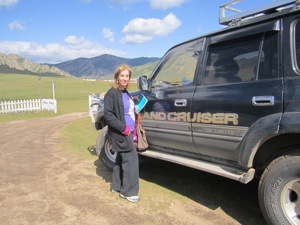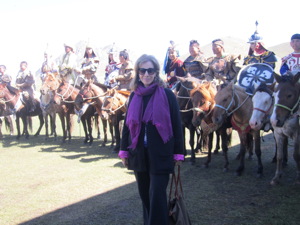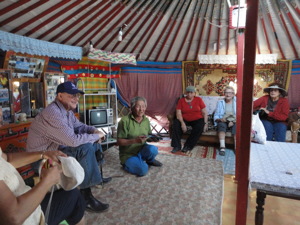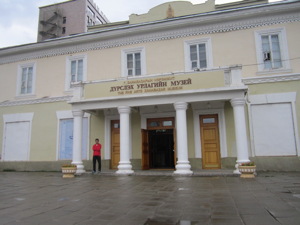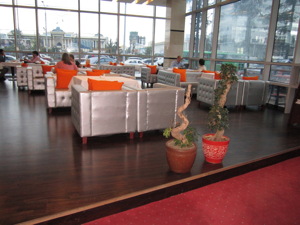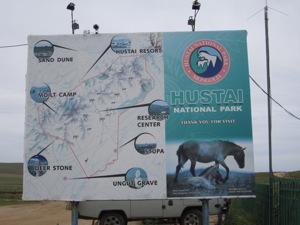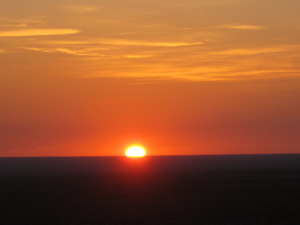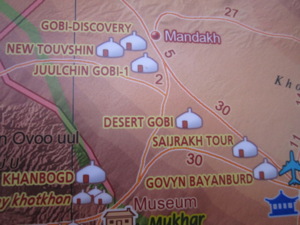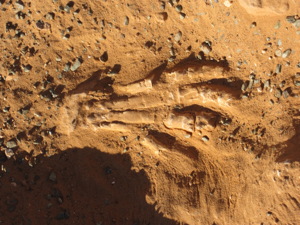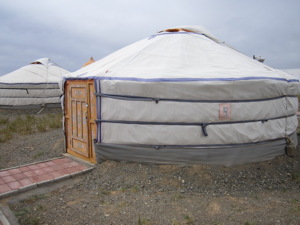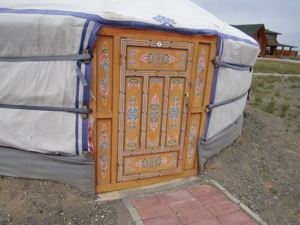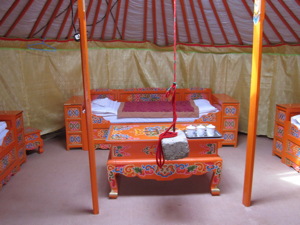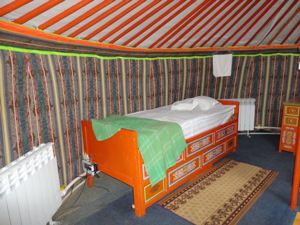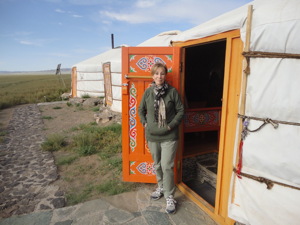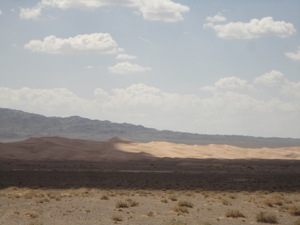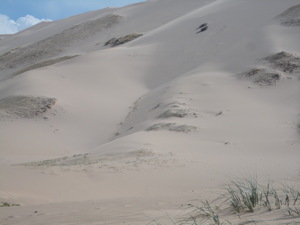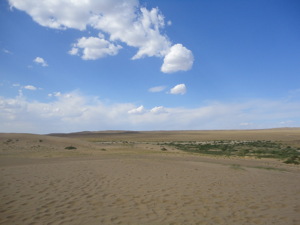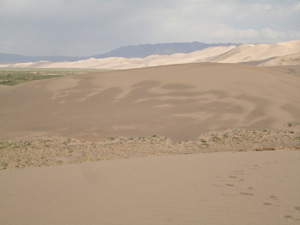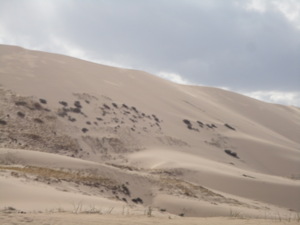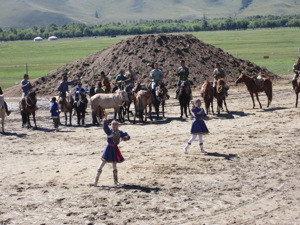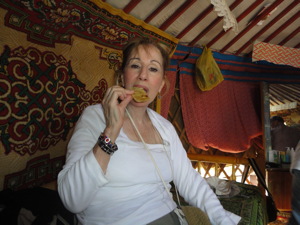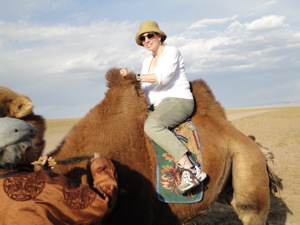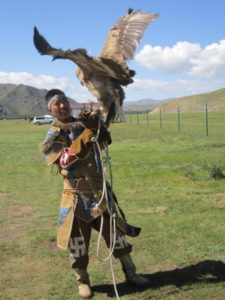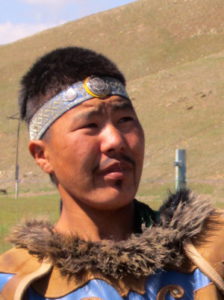MONGOLIA: EMERGING 3RD WORLD COUNTRY BUT WITH A MOTHERLODE OF HIDDEN WEALTH
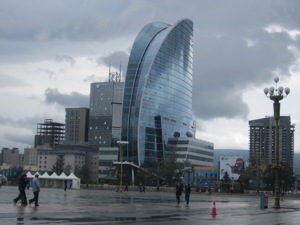 I had a preconceived idea that this land-locked country surrounded by the Altai Mountain range with undisturbed nature and little tourism, untouched by the modern world and a population of 3 million, would be a hardship. All that changed in 1990 with their independence from the Soviet regime. But in some areas poverty still exists. One half of Mongolians live in the capital, Ulaanbaatar (aka UB).
I had a preconceived idea that this land-locked country surrounded by the Altai Mountain range with undisturbed nature and little tourism, untouched by the modern world and a population of 3 million, would be a hardship. All that changed in 1990 with their independence from the Soviet regime. But in some areas poverty still exists. One half of Mongolians live in the capital, Ulaanbaatar (aka UB).
Sure it’s a third world country but with a stack of undeveloped riches gold, oil, copper, nickel, zinc, coal, silver, phosphate, and fluorspar. Potential aplenty. Question is, can the Mongolians do it on their own or will they be, yet again, invaded and colonized for their underground wealth?
THE LAND OF THE ETERNAL BLUE SKY
This country is destined to be on bucket lists around the world. Yes, there are visible levels of lifestyles from the very lowly and shabby houses to Gerts (Yurts) (more about that later), but there are also ultra-trendy steel and glass structures in Ulaanbaatar. It’s a schizophrenic city with an art gallery having only fair presentations in the large city square monopolized by the country’s hero, Ghenghis Khan and within a stone’s throw of the National Museum of Mongolia, which is a wondrous starting point. Its collection ranges from be-jewelled, golden woven robes to several million-year-old fossils from the Gobi Desert that depict the history of Mongolia.
Also, astonishing for me was the very busy Louis Vuitton shop, Italian imported menswear at the Zenga boutique.. Who’s buying? I asked. “The locals”, I was told. I was stunned.
TRAFFIC? YOU AIN’T SEEN NOTHIN’ UNTIL YOU VISIT MONGOLIA.
The country’s infrastructure barely exists. It gives new definition to river rocks which pit the roads outside the cities, veering drivers onto pastures to crisscross among yaks, goats and wild horses.
Not only is the traffic out of control, with drivers ignoring the safety of pedestrians, but they also blatantly disobeys international road rules, hitting pedestrians while they are crossing on well-marked crosswalks.
There are few taxis available and streets flood so just pray there isn’t rain. I was up to my ankles in water in a rare rain storm, that neither the sewers nor cars, pedestrians or shopkeepers were expecting. The latter allowed me to dry off and wait for my hotel driver to get me. The hotel was only 6 km (4.2 miles) away, but it took the driver 1 hour to arrive and I had no choice but to wait without annoying the shopkeeper’s tolerant staff. But I did purchase gifts to take home as a thank you for the staff’s patience.
ULAANBAATAR’S CITY SQUARE
Ghengis Khan Square is surrounded by large buildings, even a five-star hotel, and there are artists showing their best works since few galleries exist to exhibit them. Formerly named after, Damin Sukhbaatar, the founder of the Mongolian People’s Party, the Square it is now called after the Mongolia’s national hero.
BUT IT WAS THE GOBI DESERT THAT STARTED MY PULSE RATE GOING OVER THE TOP
Gers or Yurts are permanent for locals even in the harshest winters. To help supplement the lack of heating, they do have portable heaters and also heavy felt lining on their walls, hence the city’s other moniker, “the city of felt’.
Tourists get the simplified, temporary Gers that are taken down at the start of winter. Yol Valley in Gurvansaikhan National Park was my first Ger tryout and it was a triumph. Sure there are some physical challenges. The interiors of all three Gers in which I stayed, had a table and chair, three narrow but very comfortable beds in each corner covered with spotlessly clean linens, and a single hanging light bulb that went off at 10PM. The top opened to allow air inside during the day but it was too cold to keep open at night. If nature calls during the night, you must walk, using your handy flashlight, usually uphill. My hope was that some small animal wouldn’t attack my ankles. The loos and showers are exceptionally clean. Breakfasts are an attempt to serve what they think tourists want. It was certainly edible but it would be preferable to try the local food.
The major highlights were the sunsets and sunrises in their dazzling, technicolour hues, the likes of which I’d never seen before.
Welcoming me into a local’s Ger, the Mongol family offered me fermented mare’s milk and homemade bread. Who could refuse? I also was given their ‘vehicle’ for a few hours . . . a not so new Bactrian (the two-hump camel variety) that had no manners as he/she spat and nipped at a friend’s calf, drawing blood. They are nasty beasts. Along with sleeping in the Gers, this desert means of transportation was one of my finest memories, but of course, I wasn’t the one who had had my calf chewed.
THERE’S THE SOUND OF MUSIC IN THE DUNES
I had heard about the ‘Singing Sands” . The dunes are majestic and if you love shifting shadows, sandy hills, with constantly changing scenery, these dunes are heartbreakers. The highest dune is about 2599 feet, a climb I didn’t complete. Sand is harder to walk on than rocks.
Later in the day, the breeze picks up and it becomes very chilly as temperatures drop sharply from the steamy, hot days.
MORE THAN EXPECTED THINGS TO DO AND SEE
In a most isolated area is Hustax National Park, the site of the Przewalski Horse Show is where great horsemanship, wrestling, sword fights on horseback, archery, and local dances in national costume can be found. The story lines: Ghengis Khan. Another great stop is Bayanzag, where 70 million-year-old Paleontological dinosaur fossils and eggs have been found. A must-see is Terelj National Park where a huge silver-covered statue of (guess who?) Ghengis Khan sits on the roof of a fine library/archives, visible from miles away.
SHOPPING FOR CASHMERE
Cashmere is an obvious material to shop for. Sweaters, blankets, socks, gloves, just about any item that can be made in this fine wool. Where disappointment sets in is in the shops that either don’t have your size, color or style and no trendy styling.
WHAT’S UP WITH FOOD
Hotels are your best bet at this time. However, there seemed to be a growing emphasis on food and restaurants. The Gers had the typical American breakfast of toast, eggs and pancakes. Since tourism is so important, I’m sure there will be a knee-jerk reaction to concentrate on more edible, local food. The one famous restaurant that I did visit, was, unfortunately just so-so. But that’s part of travel and adventure.
FINAL OPINION,
Mongolia is the ultimate safari in the sand. Sure, there are undeniable difficulties, but amenities, food, and services are rapidly improving. I would never have passed up this trip and would be happy to revisit.
This was not a FAM trip but paid for by the writer, including the airfare.
BARBARA KINGSTONE , AN AWARD WINNING TRAVEL/LIFESTYLE WRITER. MEMBER OF THE SOCIETY OF AMERICAN TRAVEL WRITERS (SATW) AND CO- FOUNDER OF TRAVEL MEDIA ASSOCIATION OF CANADA (TMAC).
FOR MORE ABOUT MONGOLIA, GOOGLE – WWW.INDULGEDTRAVELER.COM

